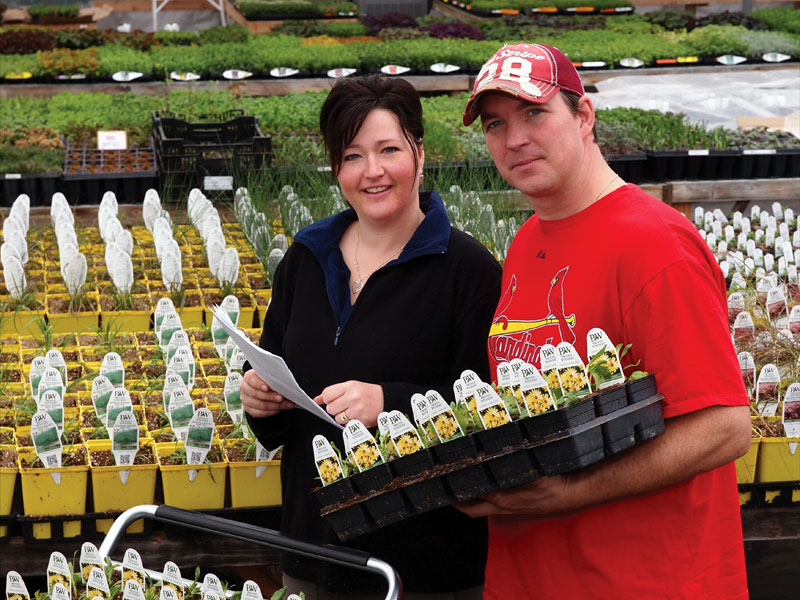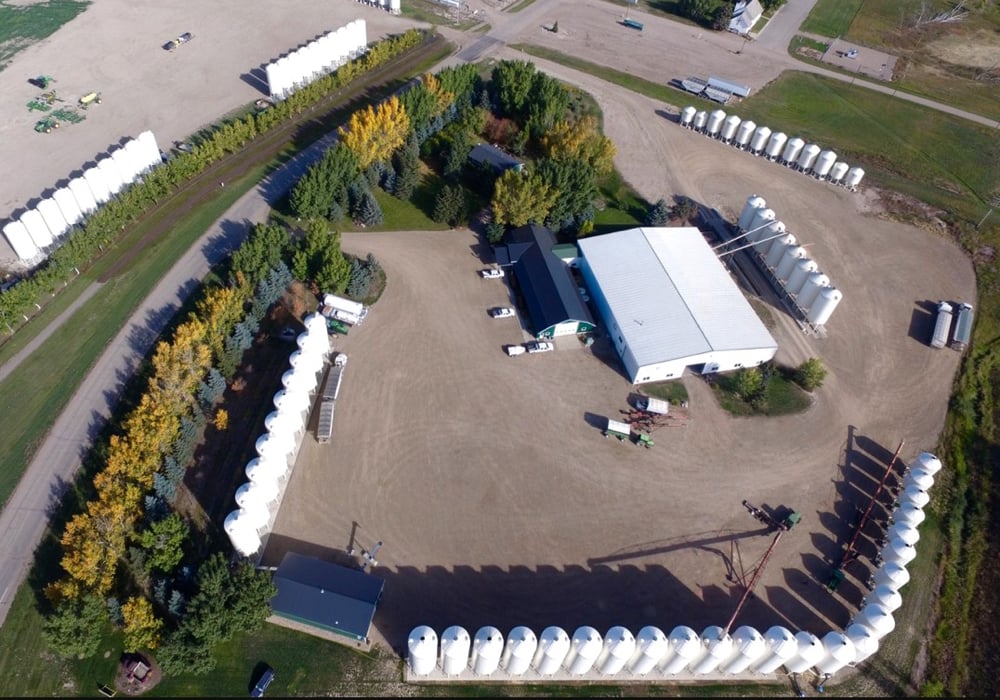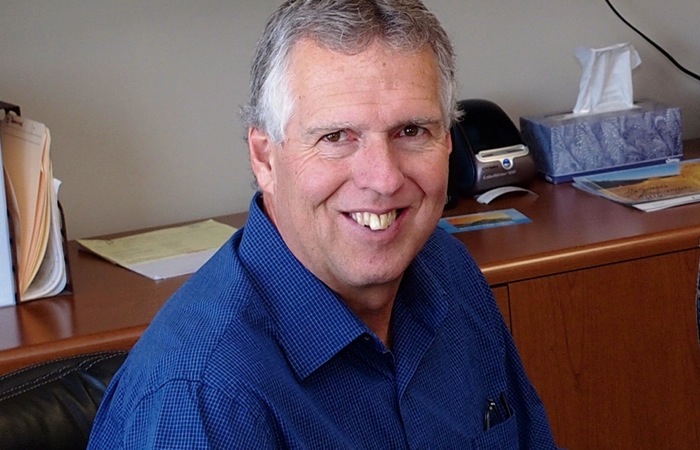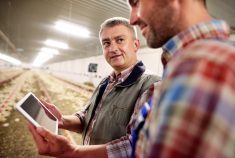There can be as many reasons for running a diversified farm business as there are farms. Diversification can add income stability and reduce overall operational risk. It can exploit market opportunities, enabling the farm family to take advantage of a lower cost of entry than competitors who might not have the same access to land or machinery. Sometimes, too, diversification can give the farm a way to invest profits at higher rates of return than can be had through banks or other investments.
Read Also

Riding the tariff rollercoaster
Farmers are accustomed to roller-coaster years. But the current geopolitical windstorm is something else entirely. On his cattle operation near…
But equally, diversification can be a risk, and even a gamble, taking energy and investment away from the farm’s core business.
It can even be untraditional, like incorporating a greenhouse as part of a grain operation.
So, what’s the best way forward? How do you make different businesses complement each other?
In their upper 30s, Chris and Crystal Page from Souris in southwest Manitoba are already involved in three established and successful businesses: a grain farm, seasonal greenhouse and custom spraying operation.
Crystal and Chris began dating in high school and then married in 2000. Crystal began her career as a dental assistant, but the summer when oldest daughter McKenna was born, she changed her career path, opting to work in the greenhouse which her parents, Geraldine (“Gerry”) and Larry Sadler had opened under the name Sadler’s Creekside Greenhouse some 20 years earlier on their farm at Elgin.
Chris’s parents, meanwhile, had begun farming in the early 1970s, starting with roughly 1,000 acres, which they have since grown to 2,600 acres, and in 1998, Chris came back to the farm after taking the agricultural diploma program at the University of Manitoba (U of M), majoring in farm business management.
Chris says the diversification wasn’t really planned — it just sort of happened. “Crystal had a passion for the greenhouse,” he explains.
Balancing the different parts of the two operations, however, is something Chris sees as a “positive challenge.”
“Everything is fresh. When you go to the greenhouse, it’s a consistent thing year after year, but there’s always something new. It’s the same with the farm; every year is different,” says Chris. “A positive challenge to me means your brain doesn’t stop. You always have a challenge and something to think about. When you’re always moving and thinking, to me that’s a healthy thing.”
- More from the Country Guide website: Family brand
The greenhouse
The greenhouse became a part of the Pages’ life when their first child (McKenna, 11) was born and Crystal’s parents thought a relocation of their business from the farm into the town of Souris would be beneficial. Besides the main greenhouse in Souris, the Sadlers have a greenhouse in Boissevain and stock another greenhouse in Carnduff, Sask.
When the Pages looked at the numbers they decided they would be better off with Crystal working in the greenhouse and being closer to home to raise their growing family (which has since grown with the addition of Kelsey, 9, and Raylee, 6). “Adding the greenhouse has increased our income flow more than when Crystal was working as a dental assistant,” says Chris. “The biggest advantage is that we’re both self-employed, but work together as needed. We have a lot of flexibility.”
The family has actually moved to town and have a house right beside Crystal’s parents, because it makes life a lot easier during the greenhouse season. “The greenhouse is like having cattle, where you need to be close to it,” says Chris. “Because the farm is strictly grain and Mom and Dad’s place is only four miles from town it’s easier for me to commute.”
Crystal’s parents still own the greenhouse and Crystal works for them handling all the retail and employee management while Gerry looks after the growing side of the operation and Larry looks after soil preparation, water maintenance and deliveries.
Sales have been increasing annually since the move, and the greenhouse has a loyal following with customers coming from miles away because Gerry, who grows most of the bedding plants from seed, has a reputation for quality and selection. “I’ve got some relatives that live in Saskatoon, which is a seven-hour drive, and they wait until they come down to visit my Grandma to pick up some plants that aren’t offered anywhere in any greenhouse between here and Saskatoon that they’ve found yet,” says Chris.
The greenhouse now runs from late-February until mid-July and then reopens for the Christmas season from November 1 to December 23 for sales of poinsettias, Christmas trees and giftware.
The greenhouse is the one area where they have to rely on seasonal employees and they have up to 14 people employed in the spring for transplanting and sales. Crystal is in charge of scheduling the employees, which, she says, “includes a great group of ladies who return every year, as well as students.”
The greenhouse has a very low employee turnover rate and part of the reason for adding the Christmas sales season was to try and keep some of the younger seasonal employees around. “It was something to help a couple of our staff that are younger that are seasonal to stick around so that we don’t lose them because they’re very good to us and they’re good at their job and we don’t want to lose them somewhere else.”
The grain business
Chris and his parents (John and Arlene Page) farm 2,600 acres on a piece of land just north of Souris, Man. John and Arlene are in charge of roughly 1,100 acres, while Chris and Crystal work roughly 1,500 acres on the books.
This gives them the ability to make decisions independently, but they also consult with one another before any final decisions are made — operating together, dependent on each other.
John does the seeding and Chris does the spraying and fertilizing. When harvest comes, Chris runs the combine and John trucks the grain. With 2,600 acres and no hired help, operations need to be well planned.
The Pages have been growing a wide variety of grain over the years, from Red Spring wheat to winter wheat, barley, canola, Nexera canola, flax, mustard and soybeans. They have tightened their rotation over the last five years to two kinds of wheat and two kinds of canola, with small test acres of soybeans.

The farm takes up most of Chris’s time, with a pre-seed or pre-emergence burnoff on almost every acre. This, combined with fertilizing each field just ahead of the drill, has Chris covering two to three times the number of acres John does. But, Chris notes, “the machines I operate are wider and run faster, so time spent in the field may only be one and half times.”
The Pages also operate a small spraying business where they do all of one neighbour’s spraying as well as their own — combined, about 15,000-20,000 acres per year.
The two families try, wherever possible, to handle the workload on their own and the Pages admit they are very lucky to have two sets of in-laws who get on well and are always ready to help one another out.
“My dad has had some health issues in the last couple of years, so Crystal and her mom and dad have come out and helped. Larry has run the combine for us and I’ve not had to worry about hiring somebody or having do it on my own,” says Chris. “My mom is very important to the operation too, from driving truck and moving equipment to making meals, and my dad will just stop into the greenhouse and he’ll carry on a conversation as I’m sitting there working, and of course he ends up helping out too.”
In addition, the flexibility that Chris and Crystal have to cross over into the two separate enterprises is a great strength and one that leaves them plenty of options for the future. “Crystal helps out when she can at harvest time but doesn’t often have as much time in the spring when I am getting crop in,” says Chris. “But by late September and early October, she’s already decorating in the greenhouse for Christmas so she can be on top of it before all the figure skating and hockey things start up with the kids. If we were to close the Christmas side of things at the greenhouse then we might be able to do more on the grain side of things because then I would have a consistent combine driver.”
Management
There is only one machine — a loader tractor — that is shared by both the farm and the greenhouse, since both receive and ship many deliveries throughout the growing season.
Still, the diversified approach means that accommodations must be made. On the farm side, Chris and Crystal will probably have to adopt a one-pass seeding operation. They already have a plan in place to address this in the near future. They may also need to downsize their current spraying operation.
On the greenhouse side, there may be more options, but it all boils down to the need to find and hire good personnel and build a financial plan that works with the extra associated costs.
“We know we can’t do it all,” said Chris. “As Crystal’s mom does all the seeding and growing at the greenhouse and her dad does all the soil prep, watering, maintenance and deliveries, we may need to hire someone to manage the retail side and have Crystal move into the growing side of the operation.”
For several years after he started farming Chris did some bookkeeping and tax preparation for a local accountant, but now he only has time to handle the books for his part of the farm and the greenhouse using a spreadsheet program he developed himself.
“I do both sets of books,” says Chris. “It saves us a little money, but I also know exactly where we sit financially in both businesses and comparing the numbers year after year helps me see where we might gain some efficiencies. It’s easier to talk to lending reps when you know where you sit, without having to put a lot of thought into it with your numbers already rolling through your head.”
The future
Apart from their growing businesses and family, it is very important to both Chris and Crystal that they contribute in other ways to the town of Souris. Chris serves as a school board trustee and on the minor hockey board, as well as being an active hockey coach. Crystal serves on the figure skating board.
Both dream of increasing the grain as well as the greenhouse operations, but acknowledge there are always risks and they are unique to each enterprise.
The farm’s equipment is large enough so they could easily add an additional 1,000-1,500 acres, says Chris. “If it was any more, we’d have to start changing some of our bigger pieces of equipment and add some different crops into our rotation.”
In the greenhouse, space does not seem to be a limiting factor, though they may need to upgrade some of the structures (which Chris anticipates will make for more floor space on the same footprint).
With about half an acre of growing and retail space, there is definitely room to grow more, assuming the Pages can find a market for the extra product, and the labour to get it produced.
“Balance hasn’t been too much of a struggle as of yet, but as both sets of parents get closer to retirement, it may come to the forefront,” says Chris. He and Crystal know that the next thing on the agenda for the two families is succession planning, which they haven’t really immersed themselves in yet.
“We don’t have a succession plan in place with Crystal’s mom and dad nor do we have with my mom and dad on the grain side of things,” says Chris. “Both sets of parents are still active in what we’re doing and haven’t really shed a light on when their retirement may or may not be.”
“There is risk with both enterprises. I’ve lost crops and didn’t plant a crop at least three times since I began farming 16 years ago,” says Chris. “Going into this season we’re thinking, with it being one of the coldest winters on record we may be swamped early on in the spring because people are so sick of -50. But next year it could be different again.
“There’s always risk on both sides,” Chris says. “But I don’t really view it as a risk. I think it’s a good and different diversification.”















